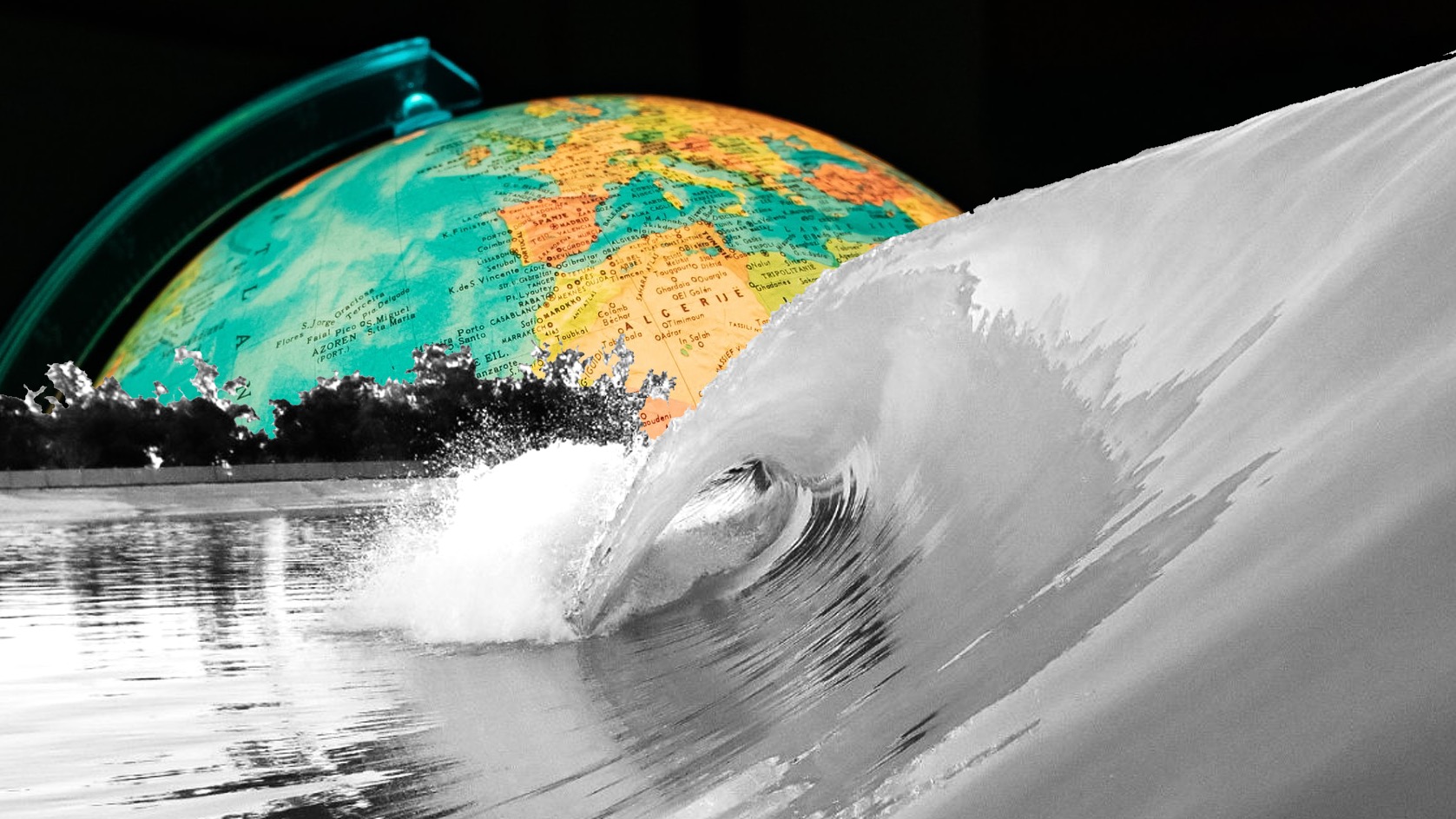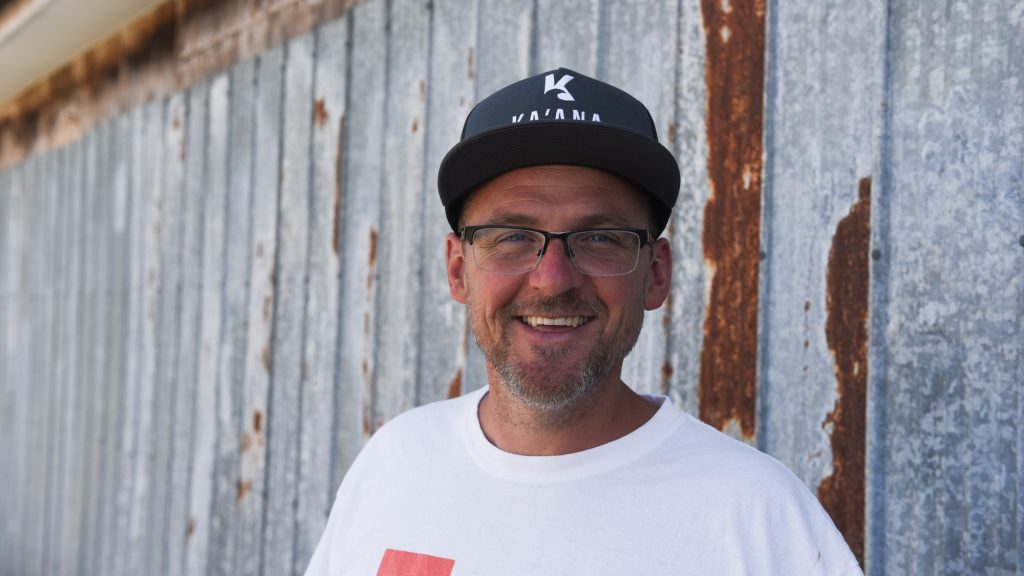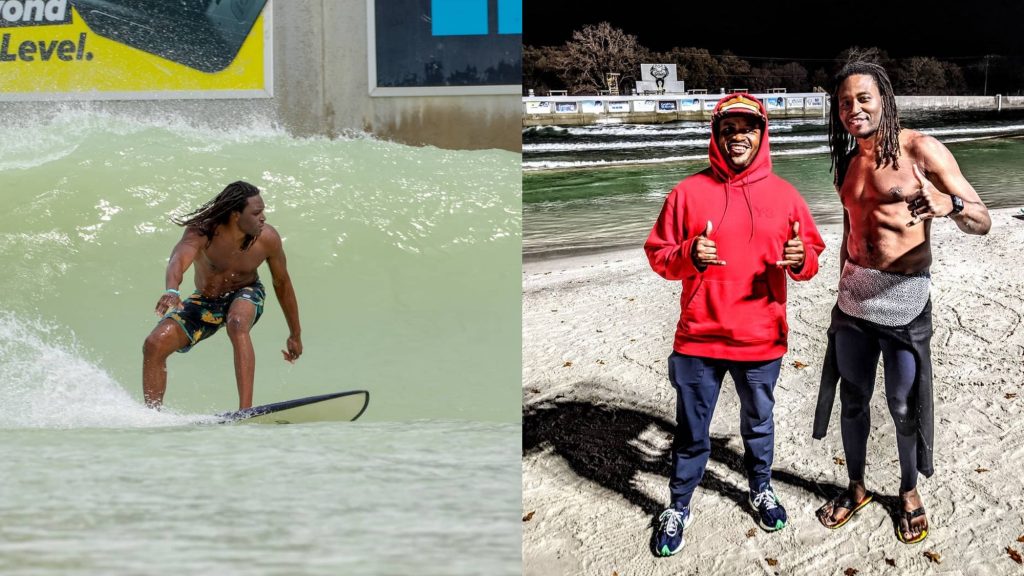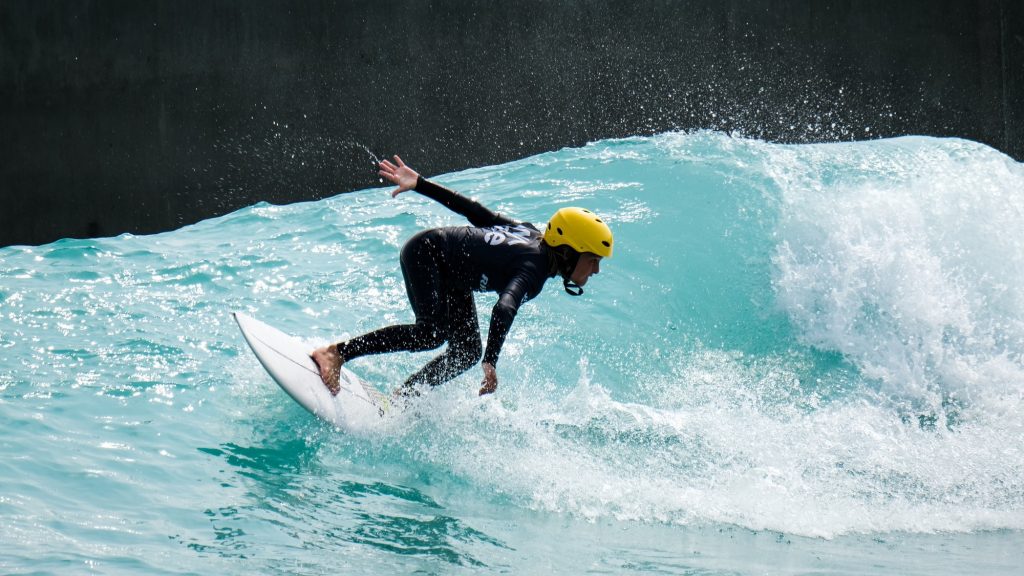Solving surfing’s geography problem with wave pools

The benefits of surfing are widely known, but for years they’ve only been accessible to those near the coast. Wave pools will change this.
The philosophic thread that “surfing makes you a better person” often misses the fact that exercise and water activity and being in the sun generally make people happy. But can it make you a happier, more complete person? Yes, it can. Most of us believe this. That is until we get our car windshield waxed by an angry local or get snaked on the wave of the day. It’s impossible to paint an activity such as surfing with such a broad swath of positivity.
While surfing is amazing and brings joy to millions the cruel joke is that it’s only accessible to those with the resources and fortune to live near a surf-able coast. In most parts of the world, this is either very expensive or not an option due to job/lifestyle options. Surfing is out of reach for most people. And without philanthropic endeavors (we’ve yet to see the Bill and Melinda Gates “Surfing For All Foundation,”) to better humanity through wave riding, wave pools are the becoming world’s best bet to make this joyful thing realistic for kids in Nebraska and throughout the world.
Wave pools can solve surfing’s geography problem and who has access to riding waves. Radical change is happening in surfing because of access given to people who ordinarily would not become full-time surfers. For those already entrenched in boardsports, like entrepreneur Jamie Watson, it’s an opportunity to be true to one’s boardsports roots.

“Throughout my life, boardsports has given me identity, a strong sense of community, and the friends I call family,” says Jamie Watson of Ka’ana Wave Co. “I was a child in the ‘80s and we lived on a university campus. Skateboarding was going off and at the age of five, for whatever reason, I identified with it. Then snowboarding came out of nowhere in the early ‘90s and this influence cemented my being.”
Even with early bonds to boarding, for Jamie (and millions of others) surfing was always elusive due to not being close to the ocean.
“You can hit the skate park for a quick session or hit up fresh powder and be back at work by lunch, but I’ve never had that with surfing,” adds Jamie. “Growing up where I am in Canada, surfing was some unattainable thing that someone else did. For me and others, surfing is a vacation that happens a couple of times a year.”
South of British Columbia, the same can be said for kids growing up in Arizona. But as far back as the 1970s, when Big Surf opened in Tempe, a new surf spot meant a new community and access to the joy of riding waves. As kids in cutoff jeans ditched the river to spend summers in the surf new locals and learners alike grew their skills in the wave pool.
Today, the barbecue-and-brew-set at BSR Surf Resort is experiencing what Big Surf locals did back in the day, albeit on a much larger scale, the creation of a legitimate surf scene.
“We’ve got the locals crew, made up of several Central Texas residents (Dallas-Fort Worth, Austin, Waco Areas), then the Coastal Texas locals (Houston-Galveston, Corpus, South Padre), and regulars from all over the USA,” says BSR local DJ Tantrum Rocks. “Then there’s regulars from several other countries. I see a familiar face Every time I go, and have met people from all over the country and the world.”

The Wave in Bristol rekindled surf stoke to the area’s inland surfers who made infrequent pilgrimages to the beach but now have a steady spot to session at. Phil Williams, whose local break is a tidal bore two hours inland from the surf, now regularly surfs The Wave with his son. Another surfer, Sasha Becejac who has a thriving cottage industry testing surfboards in wave pools, says surf parks bring access to those who wouldn’t normally have it.
“I live 3.5 hours away from the ocean, but only 1.5 hours from Bristol,” says Sasha. “Basically, I’m Rick Kane from the movie North Shore. Seriously though, I think that wave pools are just perfect for understanding surfing. Seventy-five percent of my sessions are in wave pools compared to 25% in the ocean.”
While Sasha is quick to laugh off the deeper repercussions of an entire world with access to surfing, the founder of The Wave Nick Hounsfield reiterates the more profound cultural shift. The company launched a Blue Health project this year that works with the Bristol community to build a better state of mind for those at risk.

“I wanted to create a place that would help connect people with nature, water and waves and share the positive health benefits of this,” says Hounsfield. “Over the years I’ve become aware of thousands of other people using water and surfing to help restore people’s mental and physical health and boost their wellbeing. While most of us started this kind of work because of an instinctive belief, there is now a global movement of thinkers, scientists and planners dedicated to exploring what has become known as ‘blue health.’”
We do know that exercise is crucial to mental health. We also know that surfing is really fun. It’s more fun than, say, running – running is something you do when a predator is chasing you. With surfing, there is no psychic tether to our prehistoric survival skills. Stripped down, wave-riding is simply playing in the water.
Playing creates social bonds. We remember this from our childhood playground days and can see it today in the friends we share waves with. Jamie Watson adds that these “boarding bonds” last a lifetime.
“My longest-standing friendships are through boardsports,” says Jamie. “There’s some sort of physiological connection that happens when you’re out there sharing those experiences. You know, there’s a group of guys I don’t see all year, but I bump into them off the backside, on the first powder day of the year and it’s like we never missed a beat. I want that, but on a surfboard.”
Related Coverage
